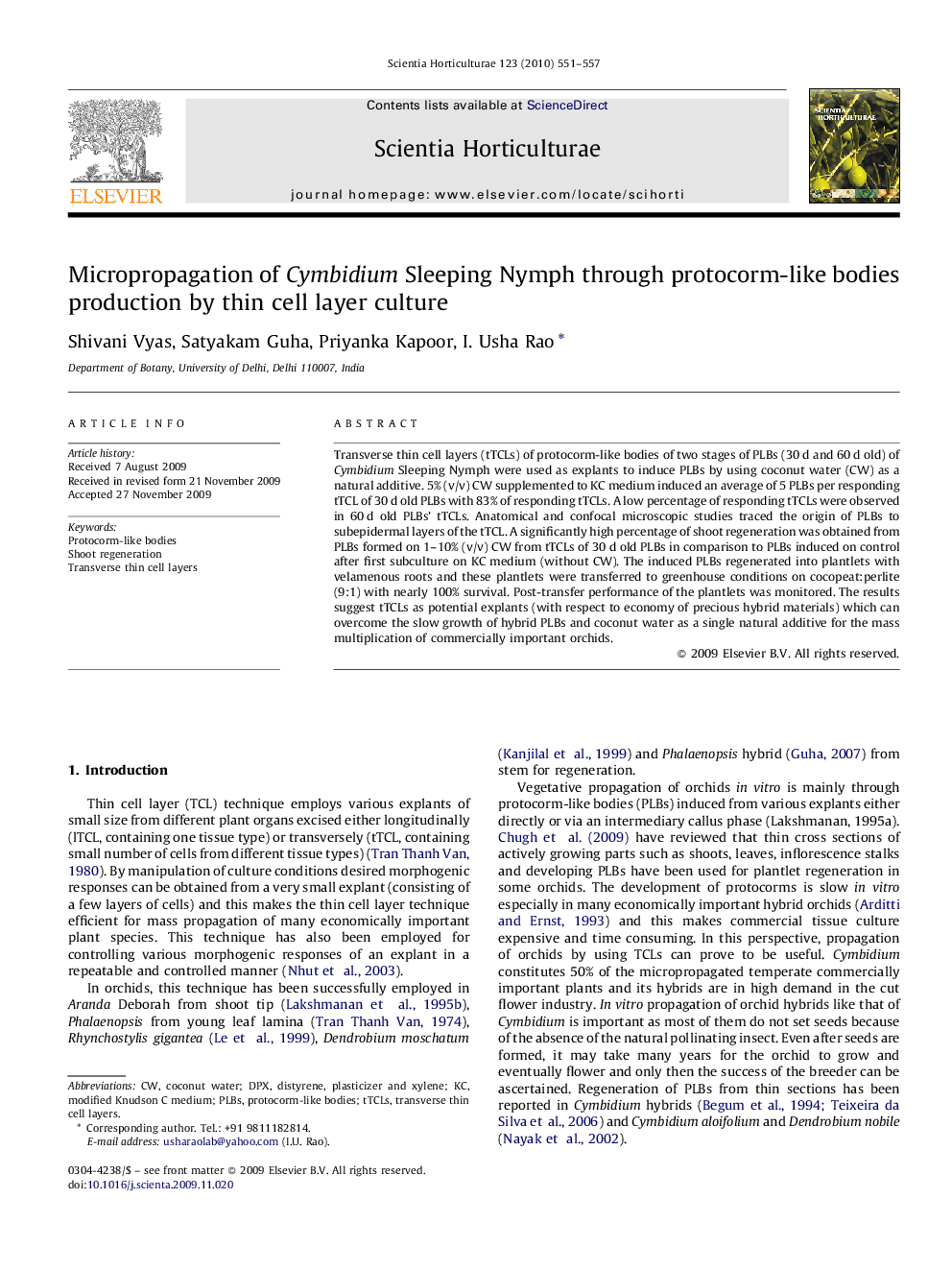| Article ID | Journal | Published Year | Pages | File Type |
|---|---|---|---|---|
| 4568976 | Scientia Horticulturae | 2010 | 7 Pages |
Transverse thin cell layers (tTCLs) of protocorm-like bodies of two stages of PLBs (30 d and 60 d old) of Cymbidium Sleeping Nymph were used as explants to induce PLBs by using coconut water (CW) as a natural additive. 5% (v/v) CW supplemented to KC medium induced an average of 5 PLBs per responding tTCL of 30 d old PLBs with 83% of responding tTCLs. A low percentage of responding tTCLs were observed in 60 d old PLBs’ tTCLs. Anatomical and confocal microscopic studies traced the origin of PLBs to subepidermal layers of the tTCL. A significantly high percentage of shoot regeneration was obtained from PLBs formed on 1–10% (v/v) CW from tTCLs of 30 d old PLBs in comparison to PLBs induced on control after first subculture on KC medium (without CW). The induced PLBs regenerated into plantlets with velamenous roots and these plantlets were transferred to greenhouse conditions on cocopeat:perlite (9:1) with nearly 100% survival. Post-transfer performance of the plantlets was monitored. The results suggest tTCLs as potential explants (with respect to economy of precious hybrid materials) which can overcome the slow growth of hybrid PLBs and coconut water as a single natural additive for the mass multiplication of commercially important orchids.
